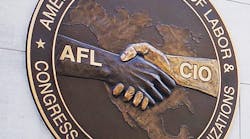Corporate efforts to lower labor costs, using methods including outsourced jobs to low-labor-cost countries, creating two-tier pay systems, and implemented automation, have been extremely successful, resulting in record profits and executive bonuses, says Michael Collins, president of MCP Consulting.
Collins says corporate’s most successful effort has been to weaken or eliminate unions. “But I wonder if their success may come back to haunt them -- and the country -- in the future.”
He wonders how manufacturing will be able to attract the workers it needs (and retain them) if they are not willing to give them bargaining power. Collins sites research manufacturing needs 600,000 highly skilled people today, and this number will continue to grow as the baby boomers retire.
“Why should highly skilled people pursue a career in manufacturing when they view it as a declining industry whose companies do not hesitate to reduce wages, outsource jobs and close plants?” asks Collins.
"Why should a young person invest in a STEM education in an industry that has lost six million workers and 82,000 factories since 2000? New workers want to work in an industry where there is job security, wages based on skills attained, good benefits, and the job is presented as a long-term career."
Collins points to the positive effect that labor unions have had on workers. “Up until the Great Depression, management had the upper hand and firepower, and many workers paid with their lives during the struggle,” Collins explained. However with the passage in 1936 of the National Labor Relations Act, unions were able to organize and bargain.
Collins provides his overview of the movement.
By 1950, one-third of all workers in all private industries were in unions. Wages and benefits grew for union and non-union workers alike, as both shared in the prosperity of the post-war economy.
From 1947 to 1973, real wages for all workers rose by 75%, according to the journalist and progressive columnist Harold Meyerson. However, from 1979 through 2006, real wages for non-managerial workers rose by only 4%.
Meyerson also notes that from 1947 to 1972, productivity in the U.S. rose 102%, and the median household income also rose 102%. Had wages continued to grow at this same rate of growth, the median wage today would be more than $70,000, instead of $51,000.
But this period of wage growth was not to last, as big corporations were determined to reduce or eliminate the power of unions.
Read Collins article on the union’s effects on the economy on IndustryWeek.
IndustryWeek is a companion site to MHL within Penton’s Manufacturing & Supply Chain Group.



